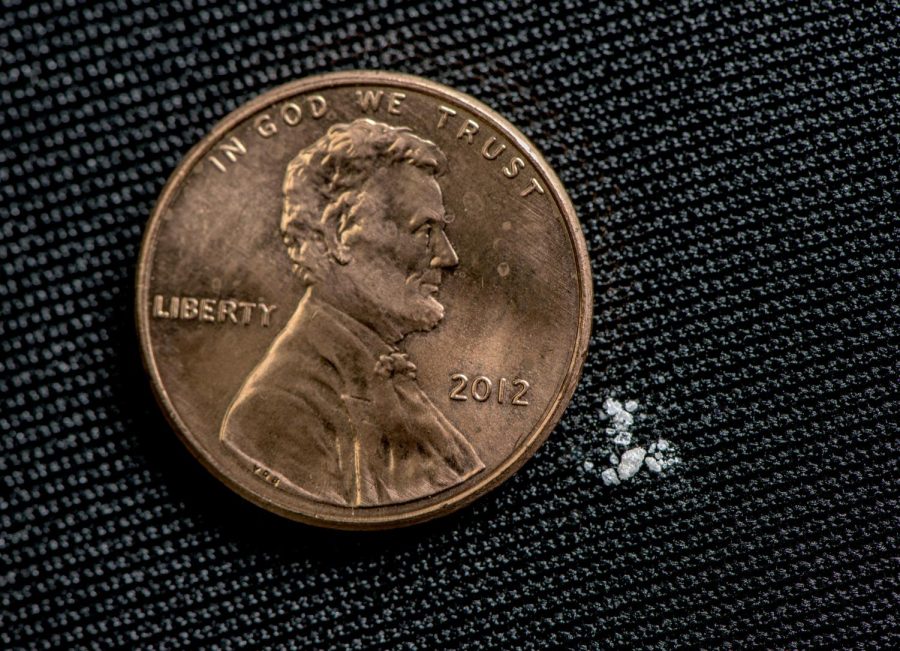Cartels Send Illegal Drugs Over Border, Fueling American Addictions
April 14, 2023
According to the Washington Post’s analysis of a Centers for Disease Control and Prevention (CDC) report, “More people have died of synthetic-opioid overdoses than the number of U.S. military personnel killed during the Vietnam, Iraq and Afghanistan wars combined” (washingtonpost.com).
Fentanyl’s prevalent grasp on American lives has ignited questions surrounding the substance’s providers and largest beneficiaries, the Mexican cartels. Highly armed and unregulated, these groups satisfy America’s many addictions while tightly controlling the lives of their country’s population.
According to the Council on Foreign Relations, these organizations bring Mexico- produced drugs across the border in a variety of ways. This includes flying over borders with the drugs in drones/aircraft, hiding substances in vehicles both in land and water, and smuggling them via underground tunnels. Once on the other side, drug shipments are provided to street gangs and local groups, who manage their retail- level distribution (cfr. org).
Mexico is populated with a great number of ultra-competitive, violent cartels. The Sinaloa Cartel, formerly led by Joaquín “El Chapo” Guzmán, is among the oldest and biggest cartels south of the border, according to the Council on Foreign Relations. It has the biggest international footprint out of all of its adversaries, and has strongholds near Mexico’s northern and southern borders as well as along the northwest Pacific coast. The Jalisco New Generation Cartel (CJNG), one of the fastest-growing cartels, supplies over one-third of the drugs on the US market. These two cartels are considered by the U.S. Drug Enforcement Administration (DEA) to be the most threatening drug traffickers (cfr. org).
Senior Prevention Specialist William Perno has presented information about the fentanylcrisis,duringthepastmonth,toUC High staff and some students. Regarding the motive behind the cartels’ use of fentanyl, Perno said, “It’s highly profitable for them. It’s 30 to 50 times stronger than heroin, and 100 times stronger than morphine, which means they can smuggle it in smaller amounts. They can sell these pills for five dollars or more per pill and it costs them pennies to make.” As to what can be done to reduce these groups’ towering influence, Division Chief James A. Fontaine of the Major Narcotics Division of the San Diego County Major Narcotics Division said, “Approximately 75 percent of the fentanyl entering the United States makes its way into the country through legitimate ports of entry, like the ones we have in San Ysidro, Otay Mesa, and Tecate. Of course, the trafficking of fentanyl into the United States is not limited to our ports of entry but include the numerous ports of entry along the southwest border that includes, California, Arizona, New Mexico and Texas.”
Fontaine added, “San Diego County remains a primary entry point for fentanyl into the United States with approximately 50 to 60 percent of the fentanyl coming through our ports of entry. The balance of fentanyl that enters the United States does so in every way imaginable: through tunnels dug underneath the border wall, in semi- submersible submarines, by boats, light aircraft, and even drones.”
In March, Mexican President Andrés Manuel López Obrador said that fentanyl is a U.S. problem and Mexico doesn’t produce or consume fentanyl, according to the Associated Press. Yet, “Fentanyl has been blamed for about 70,000 opioid deaths per year in the United States…. There is little debate among U.S. and even Mexican officials that almost all the fentanyl consumed in the United States is produced and processed in Mexico,” as per the Press’ report (apnews.com).


